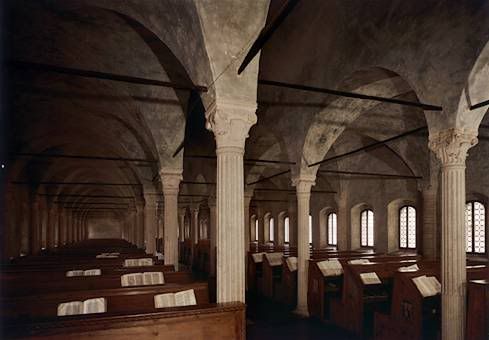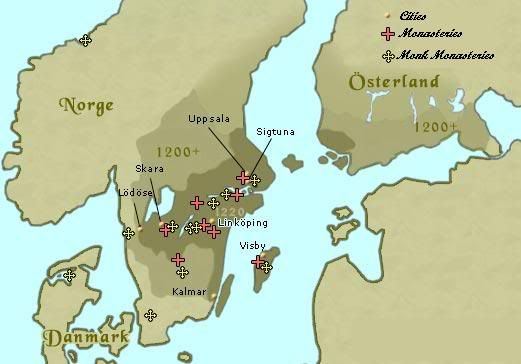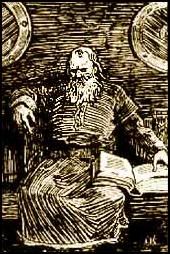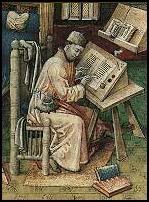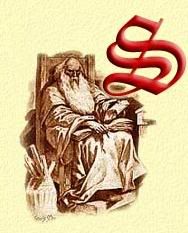2
[anchor=persons]INFLUENTIAL PERSONS IN SWEDEN[/anchor]
The King of Sweden and His Predesccors
The arms of the king, displaying Sweden (upper left), Mecklenburg (upper right), Rostock (lower left) and Schwerin (lower right)
Albert av Mecklenburg, King of Sweden
Albert of Sweden (or Albrecht von Mecklenburg in German) was born in 1338 and was elected king of Sweden in 1363. In 1384 he inherited the ducal title of Mecklenburg and united the two countries in a personal union. He's the second son of Duke Albert II of Mecklenburg and Eufemia Eriksdotter, the daughter of duke Erik Magnusson of Sudermannia and the sister of king Magnus Eriksson of Sweden. He married Richardis, daughter to count Otto von Schwerin but she died in 1377 and is today buried in Stockholm. Before she died she gave him two children; one son, Erik of Mecklenburg, and one daughter, Richardis Catherine. Today he's married with Agnes, the daughter of duke Magnus von Braunschweig and she has given him one son, Albert V of Mecklenburg.
Albrekt bases his claims on two family ties with the royal Sverker dynasty of Sweden. Both through Albrekts mother and through Kristina Sverkersdotter, a daughter of Sverker II Karlsson of Sweden, also known as Sverker the Young. Sverker II was the king of Sweden between 1196 and 1208.
It was in 1363 when the members of the Swedish regency council led by Bo Jonsson Grip arrived in the court of Mecklenburg. They had been banished from the country after first launching a revolt against the unpopulair king Magnus Eriksson in order to replace him with someone more suitable. At the nobles' request Albrekt launched and invasion of Sweden supported by several German dukes and counts. Stockholm and Kalmar with their high percentage of German population gladly invited the German duke's son and in February 4th he could already proclaim himself King of Sweden. The coronation took place illegally at Mora Sten.
This was the beginning of an eight year civil war. Magnus and his son king Håkan of Norway were defeated by the Germans near Enköping and the former was taken as prisoner by Albrekt in 1365. Now Denmark decided to intervene on Håkan's side, and to counter this several Hanseatic cities and dukes in Northern Germany expressed support of the new king. The Germans also gained another dangerous enemy this year, the Swedish peasants who weren't content with Albrekts policy in appointing Germans as officials in all Swedish provinces. The peasants suffered tremendously under the oppression of those Germans so they revolted in support of the old king. With the help of his allies Håkan managed to beat back Albrekt and lay siege to Stockholm in 1371.
The Swedish nobles now decided to help Albrekt military and after forcing the king to promise to give almost all power in the country to the regency council they beat back the Norwegians and the Danes. Now finally a peace was signed, on the condition that Magnus was released and got to travel back to Norway where he spent the rest of his life. Albrekt got to keep the crown of Sweden, but most of western Sweden is still today unhappy with the king and de facto independent
Family Tree of the Swedish Royal Dynasty
Bjälboätten - Albert's maternal Swedish family
Folke Filbyter
- Ingevald Folkesson
- - Folke den tjocke (Folke the fat)
- - - Bengt Snivil
- - - - Magnus Månesköld (Magnus Moonshield)
- - - - - (2nd m.) Birger Magnusson Jarl
- - - - - - (1st m.) Magnus Birgersson Ladulås
- - - - - - - Erik Magnusson, duke of Södermanland
- - - - - - - - Eufemia Eriksdotter m. Albrekt II av Mecklenburg
- - - - - - - - - Albrekt III av Mecklenburg
- - - - - - - - - - (1st m.) Erik av Mecklenburg
- - - - - - - - - - (1st m.) Richardis Catherine
- - - - - - - - - - (2nd m.) Albrekt V av Mecklenburg
- - - - - - - - - Ingeborg av Mecklenburg, countess of Holstein
- - - - - - - - - - Gerhard IV av Holstein
- - - - - - - - - Henrik III av Mecklenburg
- - - - - - - - - - Maria av Mecklenburg, duchess of Pommern
- - - - - - - - - - - Erik av Pommern
- - - - - - - - Magnus Eriksson, king of Sweden
- - - - - - - - - Erik Magnusson, king of Sweden m. Beatrix von Bayern
- - - - - - - - - Håkan Magnusson, king of Norway m. Margareta of Denmark
- - - - - - - - - - Olof III (Olav IV of Norway)
- - - - - - - Ingeborg Magnusdotter, queen of Denmark
- - - - - - - Birger Magnusson
- - - - - - - - Magnus Birgersson
- - - - - - - - Erik Birgersson
- - - - - - - - Agnes Birgersdotter
- - - - - - - - Katarina Birgersdotter
- - - - - - - Valdemar Magnusson
- - - - - - - Rikissa Magnusdotter, abbess in Klara monastery in Stockholm
- - - - - - (1st m.) Valdemar Birgersson av Sverige
- - - - - - - Ingeborg Valdemarsdotter
- - - - - - - Erik Valdemarsson
- - - - - - - Marina Valdemarsdotter
- - - - - - - Rikissa Valdemarsdotter
- - - - - - - Katarina Valdemarsdotter
- - - - - - - Margareta Valdemarsdotter
- - - - - - - ? Valdemarsson
- - - - - - - - ? ?dotter
- - - - - - (1st m.) Erik Birgersson
- - - - - - (1st m.) Rikissa Birgersdotter
- - - - - - (1st m.) Katarina Birgersdotter
- - - - - - (1st m.) Ingeborg Birgersdotter m. Johan I von Sachsen-Lauenburg
- - - - - - (2nd m.) Bengt Birgersson, bishop of Linköping, duke of Finland
- - - - - - (2nd m.) Kristina Birgersdotter
- - - - - - - Elena m. Ulf Holmgersson (Ama)
- - - - - - (bastard son) Gregers Birgersson
- - - - - - - Knut Gregersson
- - - - - - - Magnus Gregersson
- - - - - - - - Johan Magnusson
- - - - - - - - - Ingegärd Johansdotter
- - - - - - - - - - Magnus Trottesson (Eka)
- - - - - - - - Gregers Magnusson
- - - - - - - Karl Gregersson
- - - - - - - NN Gregersdotter
- - - - - - - ? Gregersdotter
- - - - - - - - Mats Kettilmundsson
- - - - - (1st m.) Eskil Magnusson
- - - - - - Ulf Eskilsson
- - - - - (1st m.) Karl Magnusson, bishop of Linköping
- - - - - (1st m.) Dotter Magnusdotter
- - - - - - Karl (Bobergsätten)
- - - - - - NN Sigtryggsdotter (Bobergsätten
- - - - - - Hafrid (Bobergsätten)
- - - - - - - Bengt Hafridsson (Bengt Hafridssons ätt)
- - - - - (2nd m.) Bengt Magnusson, bishop of Linköping
- - - - - - Magnus Bengtsson m. Ragnhild
- - - - Birger Brosa
- - - - - Filip Birgersson, viceroy of Norway.
- - - - - Knut Birgersson, viceroy of Sweden
- - - - - - Magnus Broka
- - - - - - - Knut Magnusson
- - - - - - - - Birgitta Knutsdotter
- - - - - - Cecilia Birgersdotter
- - - - - - Ingegärd Filipsdotter
- - - - - Folke Birgersson, viceroy of Sweden
- - - - - - Sune Folkesson
- - - - - - Holmger Folkesson (Ama)
- - - - - - ? Folkesdotter
- - - - - - ? Folkesdotter
- - - - - - ? Folkesdotter m. Karl den döve
- - - - - - - Karl Ulfsson (Ulv)
- - - - - Magnus Birgersson
- - - - - Ingegärd Birgersdotter m. Sverker d.y. Karlsson
- - - - - - Johan Sverkersson
- - - - - Kristina Birgersdotter
- - - - - Margareta Birgersdotter
- - - - Karl den döve (Karl the deaf) Bengtsson m. ? Folkesdotter
- - - - - Ulf Fase Karlsson
- - - - - - Karl Ulfsson [Ulv]
- - - - - Karl Karlsson [Ulv]
- - - Knut Folkesson
- Ingemund Folkesson
- Halsten Folkesson
House of Mecklenburg, Albrekts paternal German family
Niklot d. Aug 1160
- Pribislaw II m. Woizlava
- - Heinrich Burwin I m. Mathilde von Sachsen
- - - Heinrich Burwin II m. Kristina of Sweden
- - - - John I m. Luitgard von Hennenberg
- - - - - Heinrich I m. Anastasia von Pommern
- - - - - - Heinrich II
- - - - - - - Albrecht II, Duke of Mecklenburg m. Euphemia of Sweden
- - - - - - - - Albrecht III, King of Sweden m. Richardis von Schwerin
- - - - - - - - - (1st m.) Erik av Mecklenburg
- - - - - - - - - (1st m.) Richardis Catherine
- - - - - - - - - (2nd m.) Albrekt V av Mecklenburg
- - - - - - - - Heinrich III m. Ingeborg of Denmark
- - - - - - - - - Albrecht IV, heir to the crown of Denmark
- - - - - - - - - Eufemia
- - - - - - - - - Marie
- - - - - - - - - Ingeburg
- - - - - - - - Magnus
- - - - - - - - Ingeborg
- - - - - - - - Anna
- - - - - - - John IV von Mecklenburg-Stargard
- - - - - - - Agnes
- - - - - - - Beatrix
- - - - - - - Mathilde 1293-1355
- - - - - - - - Mathilde of Brunswick-Lüneburg
- - - - - - - - - Henry VI of Waldeck , Count of Waldeck
- - - - - - - - - Sofie of Waldeck
- - - - - - - - Elisabeth of Brunswick-Lüneburg
- - - - - - Elizabeth m. Gerhard I von Schauenburg, Count of Holstein
- - - - - - - John von Schauenburg
- - - - - - - Elisabeth von Holstein m. Burchard II von Wole
- - - - - - - Gerhard II von Holstein-Plon, Count of Plon
- - - - - - - Hedwig von Holstein-Schauenburg m. King Magnus I Birgersson Ladulås of Sweden
- - - - - - - Adolf VI von Schauenburg m. Helene von Saxe-Lauenburg
- - - - - - - Albrechtt von Schauenburg
- - - - - - - Mechtild von Holstein m. John I of Wünstorf
- - - - - - - Henry I von Schauenburg, Count of Holstein m. Heilwig von Bronkhorst
- - - - - - - Bruno von Schauenburg
- - - - - - - Otto von Schauenburg
- - - - - - Ludgarde m. Przemysl II of Poland, Duke of Poland
- - - - - - John III, Duke of Mecklenburg m. Helena of Rügen
- - - - - Hermann
- - - - - Poppo
- - - - - Nikolaus III
- - - - - Albrecht I
- - - - - John II m. Richarda
- - - - - - Elisabeth
- - - - Mechtilde m. Sabor II von Pommern, duke of Pommern
- - - - Nikolaus m. Jutta von Anhalt
- - - - - ? m. Albert I von Mecklenburg
- - - - - Heinrich I m. Rikissa Birgersdotter
- - - - - Bernard I
- - - - - Hedwig m. John II von Brandenburg-Stendal
- - - - - John I m. Sofie of Lindow and Ruppin
- - - - Margarete
- - - - Pribislaw I
- - - - - Pribislaw II m. Katharina von Pommern
- - - - - - Lukardis von Mecklenburg m. Wladislaw II
- - - - - - - Boleslaw of Schleissen-Beuten m. Margareta von Sternberg
- - - - - - - - Elisabeth
- - - - - - - - Euphemia
- - - - - Pribislaw III
- - - - Heinrich Burwin III m. Sofia Eriksdotter of Sweden
- - - - - Waldemar of Mecklenburg-Rostock
- - - - - John
- Wartislaw
- Prislaw
The royal seal of King Albrekt
The Royal Family in Lübeck
Agnes, King Albrekt's spouse
Albrecht, Prince of Mecklenburg
Erik, Prince of Mecklenburg
Richardis Catherine, Princess of Mecklenburg
Predecessors of King Albert
Prehistoric kings
Dates are approximate and existance is disputed since the sources are sparse
??? - 400 : Agne Skjafarbonde
400 - 445 : Alrek
400 - 445 : Erik
445 - 450 : Alf
445 - 450 : Yngve
450 - 475 : Jorund
475 - 497 : Aun
497 - 516 : Egil Tunnadolg
516 - 523 : Ottar Vendelkråka
523 - 530 : Ale
530 - 575 : Adils den store
575 - 580 : Östen slutet
580 - 600 : Yngvar Harra
600 - 640 : Bröt-Anund
640 - 650 : Ingjald Illråde
650 - 700 : Ivar Vidfamne
700 - 742 : Harald Hildetand
742 - 750 : Randver av Svitjod
750 - 775 : Sigurd Ring
775 - 800 : Björn Järnsida
800 - 829 : Erik Väderhatt
829 - 845 : Anund Uppsale
829 - 850 : Björn på Håga
850 - 859 : Olof I Björnsson
859 - 900 : Erik Emundsson
900 - 934 : Björn Eriksson
934 - 935 : Ring Olofsson
960 - 970 : Emund slemme
The House of Munsö or Uppsala
985- 995 : Eric the Victorius (Erik Segersäll)
995-1022 : Olof of Sweden (Olof Skötkonung)
1022-1050 : Anund Jacob (Anund Jakob) and Canute
1050-1060 : Emund the Old (Emund den gamle)
The House of Stenkil
1060-1066 : Stenkil (Stenkil Ragnvaldsson)
1066-1067 : Eric VII of Sweden (Erik (VII) Stenkilsson)
1066-1067 : Eric VIII of Sweden (Erik (VIII) Hedningen)
1067-1070 : Halsten (Halsten)
1070-1079 : Haakon the Red (Håkan Röde)
1079-1084 : Ingold I (Inge (I) den äldre)
1084-1087 : Blot-Sweyn (Blot-Sven)
1087-1105 : Ingold I (Inge (I) den äldre)
1105-1118 : Philip Halsten (Filip Halsten)
1105-1125 : Ingold II (Inge (II) den yngre)
1125-1130 : Magnus the Strong (Magnus den Starke Nilsson)
The Houses of Sverker and Erik
1130-1156 : Sverker I of Sweden (Sverker den äldre) - The House of Sverker
1156-1160 : Eric the Saint (Erik den helige) - The House of Eric
1160-1167 : Charles VII of Sweden (Karl Sverkersson) - The House of Sverker
1167-1195 : Canute I of Sweden (Knut Eriksson) - The House of Eric
1196-1208 : Sverker II of Sweden (Sverker den yngre) - The House of Sverker
1208-1216 : Eric X of Sweden (Erik Knutsson) - The House of Eric
1216-1222 : John I of Sweden (Johan Sverkersson) - The House of Sverker
1222-1229 : Eric XI of Sweden (Erik Eriksson) - The House of Eric
1229-1234 : Canute II of Sweden (Knut Långe)
1234-1250 : Eric XI of Sweden (Erik Eriksson) - The House of Eric
The House of Folkung
1250-1275 : Valdemar I of Sweden (Valdemar Birgersson)
1275-1290 : Magnus I of Sweden (Magnus Ladulås)
1290-1318 : Birger of Sweden (Birger Magnusson)
1319-1364 : Magnus II of Sweden (Magnus Eriksson)
1356-1359 : Eric XII of Sweden (Erik Magnusson)
1363-1389 : Albert of Mecklenburg (Albrekt av Mecklenburg)
Bo Jonsson Grip, viceroy of Sweden, Officialis Generalis, head of the nobility, count of Sudermannia, owner of Bjärkaholm, Gripsholm and Ringstaholm, lord of Opensten, Orensten, Rumlaborg, Kalmar, Nyköping, Stegeholm, and Stegeborg, of Finland, Nylandia, Satakunda, Savonia, Tavastia, Åbo Slott, Raseborg, Viborg, Tavstehus.
Bo Jonsson Grip (b. 1330) was lord of the royal council and marshal under Magnus Erikssons regency. His friend and colleauge, Karl Ulfsson av Ulvåsa the oldest son of holy Bridget was also in the council.
Bo Jonsson has dominated the political life of Sweden for decades. He was the most important representative of the council aristocracy that deposed Magnus Eriksson in 1365 and put Albrekt av Mecklenburg on the Swedish crown. In 1369 he became officialis generalis (highest official).
Through inheritance and unprejudiced methods Bo has come to control the largest wealth Sweden has ever seen. This lord has through political and economical means usurped 1 500 farms in 350 parishes throughout Sweden from Kalmar to Falun. He owns over 1/3 of Sweden and needless to say that makes him the largest landowner in Sweden, with more land than the king.
From the Gripsholm castle he governs the whole valley of Lake Mälaren, Helsingia, all of Finland, large parts of Westrogothia, Eastern Ostrogothia and the Smalandia coast including the city of Kalmar
Bo Jonsson Grip owns a dozen of fortresses, among else Finnish Åbo, Tavastehus and Viborg, Swedish Kalmar and Nyköping plus those he has built himself, Bjärkaholm, Ringstaholm and Gripsholm, the apple of his eye. He's often residing on Gripsholm just outside Mariefred.
He is the most important man in Sweden, wealthiest and most powerful as the head of the council and he leads the struggle against the royalty to prevent German influence in Sweden.
Bo has been married twice, first time with the rich Margareta Porse who died after a short time while she was giving birth. Bo Jonsson let deliver the baby who unfortunately died after one day. Rumour is that he let the surgery happen only because he wanted the inheritance right of his spouse.
The second marriage was with a beautiful German, Margareta Dume, who had many admirers. One of these were Karl Nilsson, a noble from Sudermannia. He was stabbed in front of the high altar in the church of gray brothers in Stockholm. It was rumoured that Bo Jonsson Grip was guilty, although he had witnesses who swore that he hadn't been near the church. Nine days later however Karl Nilssons estate was in the hands of Bo...
Krister Nilsson Vasa
Ulf Karlsson av Ulvåsa
Ture Bengtsson Bielke
Axel Pederssen Tott
Algot Sture
Tord Bonde Röriksson
Laurens Ulfsson av Aspenäsätten
Karl Ulfsson Sparre av Tofta
Henrik Karlsson, Henricus Caroli Archbishop of Uppsala, Prima Suecia
Peter Kristiansson, Petrus Xtianus, Bishop of Skara
Nils Hermansson, Nicholaus Hericus, Bishop of Linköping
., ., Bishop of Åbo
., ., Bishop of Växiö
., ., Bishop of Västerås
., ., Bishop of Strängnäs
Noble Families and Dynasties
Grip
Tomas Jonsson m. Katarina Ulfsdotter
- Margareta m. Sigurd Djokn
- Johan m. Ingeborg Bosdotter (Natt och Dag)
- - Bo m. 1) Margareta Petersdotter (Porse), 2) Margareta (Greta) Lambrektsdotter Dume
Viceroy of Sweden, Officalis Generalis
- - - Knut m. Ermegard Bylow
- - - - Katarina
- - - Katarina m. Nils Erengislesson
The possessions of the Grip Dynasty
Aspenäsätten
Birger av Aspenäs
- Filip m. Cecilia Knutsdotter
- - Ingegerd m. Karl Tjälvesson av Fånöätten
- - Birger + 1280 m. Ulfhild Magnusdotter
- - Johan + 1280 m. Ingeborg Svantepolksdotter + 1341
- - - Knut + 1347 m. Katarina Bengtsdotter + 1350
- - - - Ingeborg m. Erik Valdemarsson av Folkungätten
- - - - Filip
- - - - Birger
- - - - Cecilia + 1350
- - - - Magnus
- - - - - Ingeborg
- - - - Jon + 1359 m. Helena Laurensdotter
- - - - - Knut d y + 1359
- - - - - Bengta m. Lars Leopard Filipsson
- - - - - Ulf m. Gunhild Uddormsdotter
- - - - - - Orm
- - - - - - Knut
- - - - - - Laurens
Ätten Vasa
Nils Kettilsson +1381 m. Kristina Stjärna
- Krister (Cristiern) *1365
- Ramborg
- Ingeborg
Bielke
Ture
- Bengt m. Ingeborg
- - Ture
- - Sten
Tott
Peder Axelsson + 1375 m. Juliana Grubbe
- Axel
Sture
Anund Sture + 1360 m. Katarina Näskonungsdotter + 1331
- Magnus
m. Karin Algotsdotter + 1379
- - Algot
- - Ingegärd
Bonde
Rörik Bonde + 1364 m. Ramborg Nilsdotter (Vasa)
- Tord
Ulv
Karl, den döve
- Ulf
- - Ingeborg
- - Filip
- - Ulf av Ulvåsa
- - - Karl
- - - - Ulf
- - - - Karl
Sparre av Tofta
Ulf Åbjörnsson
- Karl * 1317 m. Helena Israelsdotter
- - Margareta
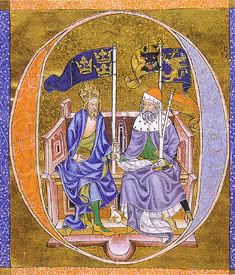

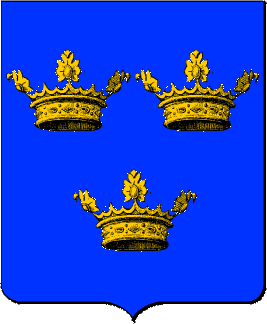



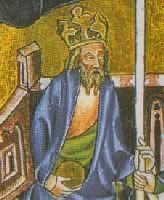
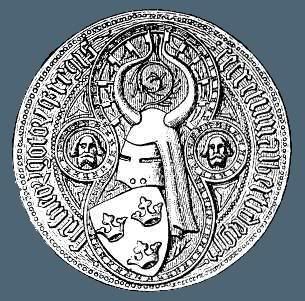










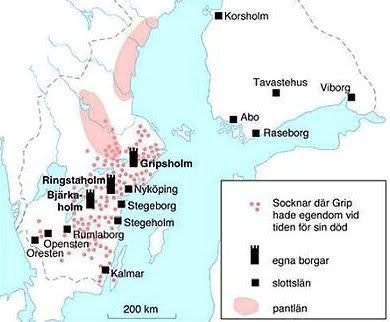

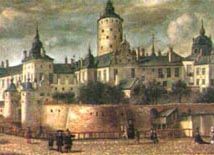
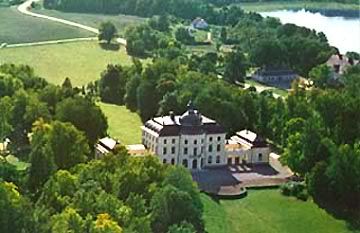

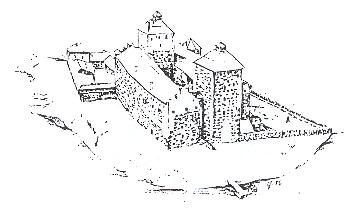
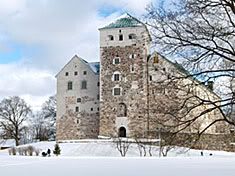



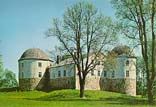
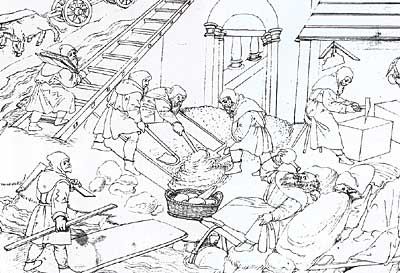
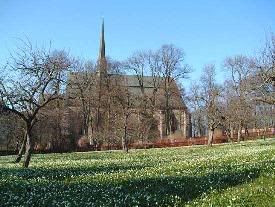
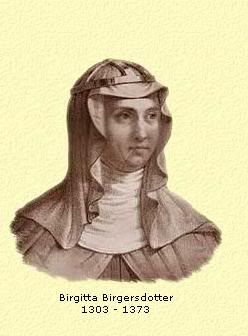
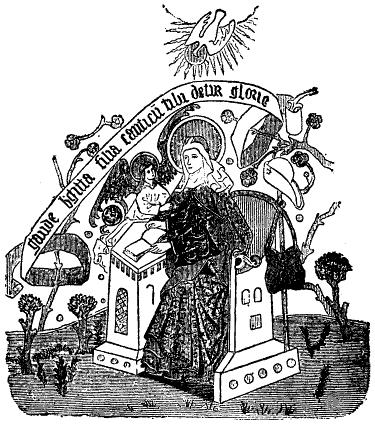
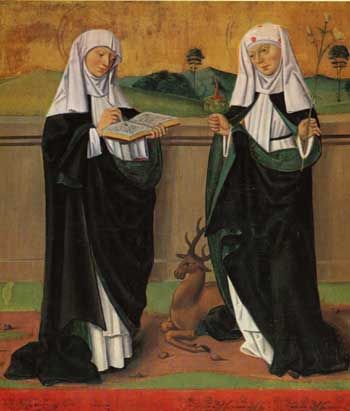
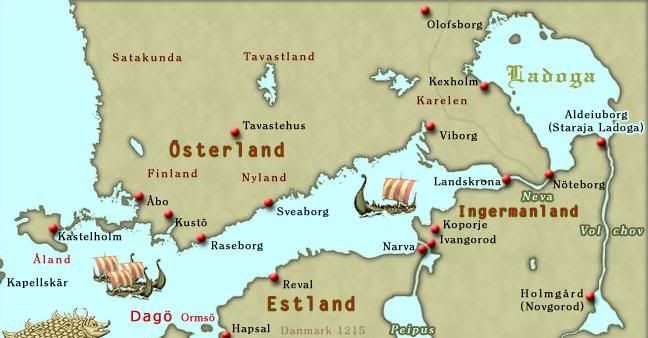






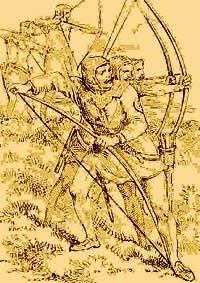
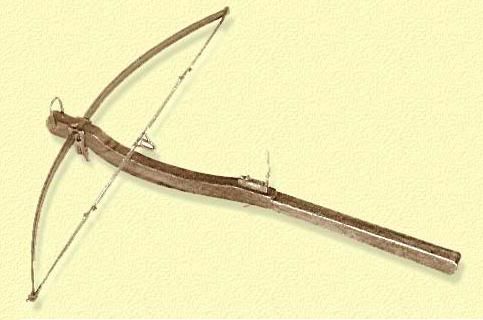
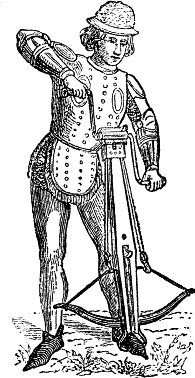
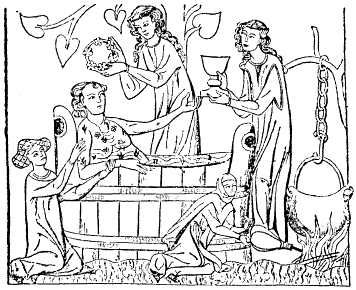

 Teutonic Order
Teutonic Order Denmark
Denmark Norway
Norway England
England Hanseatic League
Hanseatic League Scotland
Scotland Novgorod
Novgorod